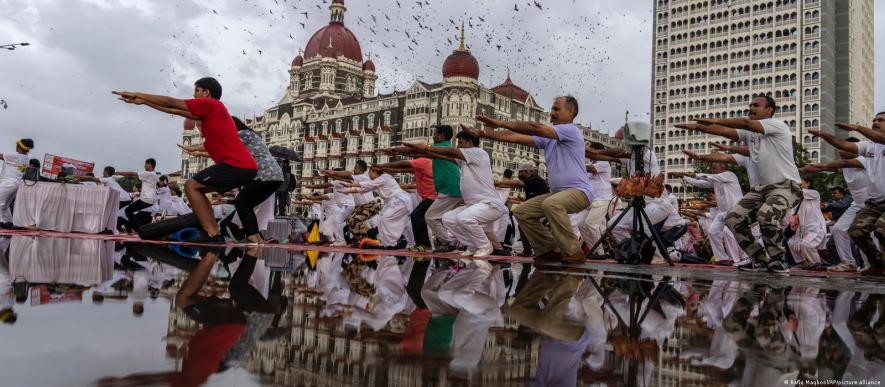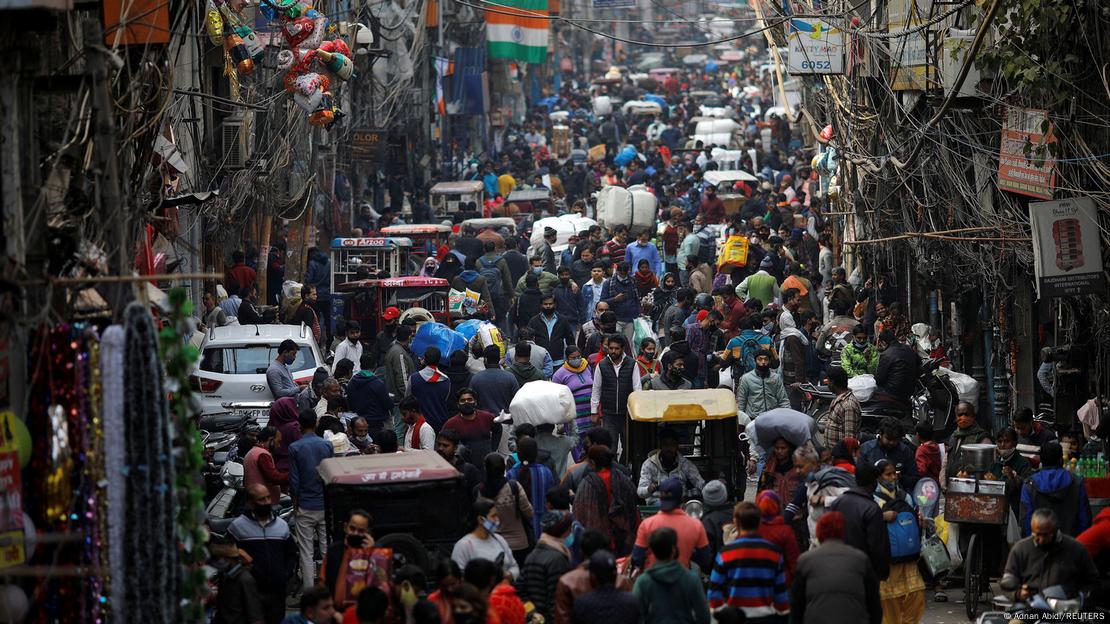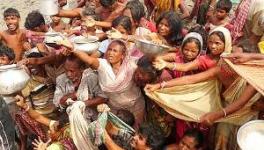How Healthy Are India's 1.4 Billion People?

India's population reached 1.4 billion people at the end of last year, according to estimates from the World Population Review. That's 5 million more than in China, which had held the top spot since 1950, when the United Nations began keeping a track of national demographics.
The development comes at a time when several developed nations such asGermany, the UK and Japan are facing shrinking workforces. Subsequently, their governments are introducing immigration policies that invite highly skilled individuals to set up their homes in these countries.
India's growing population has historically been seen as something negative given the stress it puts on basic resources. More recently, though, there seems to have been a shift in perspective as some parties argue that having the world's largest and youngest population has its perks.
Either way, India currently has the world's attention, and everyone has one underlying question: Will India's rising population propel it into accelerated development?
The big picture
"It becoming the most populous country in the world doesn't change anything on ground," Belgian-born Indian developmental economist Jean Dreze told DW.
India's fertility rate has dropped from an average of six children per woman in 1964 to 2.1 children per woman in 2020, according to UN data. That's marginally below the replacement rate of 2.2 — i.e., the required number of births per woman to maintain a population. Improvements in health care and increasing life expectancy are likely to continue the momentum of population rise for a few more decades, according to experts.
Data projections predict that India's population will slowly grow to 1.7 billion by 2064 but then fall drastically. The US-based Institute for Health Metrics and Evaluation has predicted that India's population could fall back to around 1 billion by the end of the century.
"What I'm saying is that I don't see a population crisis," said Dreze. "India has been a large country all this time and nevertheless the economy is growing, and it is able to improve people's living conditions, albeit slowly. And population growth is not going to continue much longer."
![]()

With more than half of India's population under 30, the country's young people give the economy an edgeImage: Adnan Abidi/REUTERS
Exaggerated expectations
With more than half of India's population under 30 years of age, several argue that the country's young people give its economy an edge in the form of a demographic dividend — the economic growth potential which comes from the shift in a population's age structure.
Dreze, however, thinks that this is exaggerated.
"What they don't realize is that the demographic dividend is already over, by and large," he said.
The economist pointed out that the dependency ratio of children and elderly who don't earn on those who do, had dropped drastically over the past decades.
"It [dependency ratio] is not going to decline much more now. We are already past that stage. In the future, there may not be as many children, but elderly dependency will rise," he said.
Quality over quantity
Overpopulation of a country, by simple rules of demand and supply, will inevitably put pressure on natural and manmade resources.
"Rapid population growth makes eradicating poverty, combating hunger and malnutrition, and increasing the coverage of health and education systems more difficult," said Li Junhua from the UN's Department of Economic and Social Affairs.
India's population has grown by a billion in the past 70 years, but the health care infrastructure has not grown at a proportional rate and the out-of-pocket cost of health care has risen.
Nonetheless, cost of health care in India is still significantly lower than its peers and per capita income has been rising.
However, the majority of India's population growth comes from rural and underprivileged areas around the Ganges basin, while the rise in income comes from the urban, privileged population.
Inequality is on the rise.
On the education front, 65% of India's population has finished secondary education and would be eligible for higher levels such as PG diplomas, MBAs and doctorates — an impressive statistic comparable to developed nations. However, only a quarter of the population actually enrolls in such courses.
Moreover, a significant chunk of India is malnourished, unskilled and marginalized — and hence unable to meaningfully contribute to the nation's development.
The employment rate has been steadily declining since 2005.
Economics Professor Jayan Thomas of Indian Institute of Technology in Delhi outlined the mismatch between demand and supply of labor in an interview with the media outlet Business World.
"The difficulty is that the labor supply growth in India is accelerating during a period in which the employment elasticity of growth has declined significantly," Thomas said.
"Due to automation and other technological changes, the production of one ton of steel or garments requires fewer workers today than it did two or three decades back.Therefore, it will be difficult for India to replicate China's success in absorbing massive amounts of labor into its export-oriented industries during the 1990s and 2000s."
Per capita income — while rising — is still among the lowest in all of G20 countries.
Over 70% of India's population cannot afford a healthy diet as of 2020 despite the fact that the cost of food remains relatively low by comparison to other countries.
Key social and economic indicators apart, India also seriously lags in other arenas such as the overall happiness of the population, press freedom, the safety of women and minorities.
"Having a large population is one thing but for that to be advantageous, we need to focus on the quality of the population," Dreze said.
"And that's something India can improve on."
Edited by: Keith Walker
Get the latest reports & analysis with people's perspective on Protests, movements & deep analytical videos, discussions of the current affairs in your Telegram app. Subscribe to NewsClick's Telegram channel & get Real-Time updates on stories, as they get published on our website.























